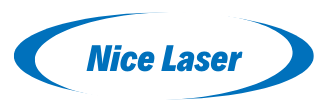The Significance of Fume Extractor in Laser Coding
Upload Time:
Jun 03, 2025
A fume extractor is not just an accessory but a critical component in laser coding systems, directly impacting quality, safety, and operational efficiency. By selecting the right filtration technology, integrating it properly, and maintaining it rigorously, manufacturers can optimize laser coding performance
The Significance of Fume Extractor in Laser Coding
In laser coding applications, a fume extractor (also known as a laser fume extractor or fume absorber) plays a critical role in maintaining optimal performance, safety, and environmental compliance. Below is a detailed analysis of its functions, benefits, challenges, and best practices in laser coding:
1. Primary Functions of Fume Extractors in Laser Coding
a. Remove Harmful Byproducts
When laser interacts with materials (e.g., plastics, metals, coatings), it generates aerosols, fumes, and volatile organic compounds (VOCs). For example:
- Plastics (PVC, ABS): Release hydrogen chloride (HCl), dioxins, or styrene.
- Metals: Produce metal oxides (e.g., zinc oxide from galvanized steel) or fine particulate matter (PM).
-
Coatings/inks:
Emit VOCs or hazardous fumes (e.g., formaldehyde).
Fume extractors capture these contaminants to prevent them from spreading into the workspace, protecting operators and equipment.
b. Protect Laser Optics and Equipment
- Dust/fume accumulation on laser lenses (e.g., focusing mirrors, beam expanders) can reduce laser power, distort beam quality, and cause thermal damage (e.g., lens cracking due to overheating).
- By maintaining a clean optical path, fume extractors ensure consistent coding quality (e.g., sharp, uniform marks) and reduce maintenance costs (e.g., less frequent lens cleaning/replacement).
c. Ensure Regulatory Compliance
Many industries (e.g., automotive, medical, electronics) require compliance with air quality standards (e.g., OSHA in the U.S., REACH in the EU). Fume extractors help meet limits for hazardous airborne substances, avoiding fines and ensuring workplace safety.
2. Key Benefits of Proper Fume Extraction
|
Benefit |
Mechanism/Example |
|
Improved Coding Consistency |
Removes particulate interference, preventing blurry, incomplete, or uneven marks. |
|
Extended Equipment Lifespan |
Reduces wear on moving parts (e.g., motors, guides) and protects electronics from corrosion. |
|
Operator Safety |
Mitigates risks of respiratory issues (e.g., metal fume fever, chemical poisoning) and eye/skin irritation. |
|
Environmental Protection |
Captures toxic fumes before they enter the atmosphere, aligning with sustainability goals. |
3. Challenges and Risks of Poor Fume Extraction
a. Coding Quality Degradation
- Particulate buildup on the workpiece or lens can cause:
- Incomplete marks: Dust particles block laser energy, leaving gaps in the code.
- Charring/Discoloration: Residual fumes may redeposit on the surface, altering the mark’s appearance.
b. Equipment Damage
- Corrosive fumes (e.g., from PVC) can erode metal components, circuit boards, or optical coatings, leading to costly repairs.
- Overheating: Dirty lenses reduce laser efficiency, forcing the machine to operate at higher power and risking premature failure.
c. Safety and Compliance Issues
- Exposure to unfiltered fumes may violate occupational health regulations, leading to legal liabilities or production halts.
- In extreme cases (e.g., flammable fumes), poor extraction can create fire or explosion hazards.
4. Fume Extractor Selection Criteria for Laser Coding
a. Filtration Technology
- HEPA Filters: Capture ≥99.97% of particles ≥0.3 microns (ideal for dust, metal shavings).
- Activated Carbon Filters: Adsorb VOCs, odors, and gaseous pollutants (critical for plastics or coated materials).
- Combination Systems: Use pre-filters (for large particles) + HEPA + carbon filters for multi-stage purification.
b. Airflow and Suction Power
- CFM (Cubic Feet per Minute): Higher CFM suits high-volume fume generation (e.g., metal laser coding).
- Adjustable Settings: Allow customization for different materials (e.g., low suction for delicate plastics to avoid workpiece displacement).
c. Compatibility with Laser Systems
- Proximity to the Work Area: Extractors should be positioned close to the laser head (e.g., via a flexible arm or built-in nozzle) for efficient capture.
- Noise and Space Requirements: Choose compact, low-noise models for benchtop setups or industrial-grade units for large-scale production lines.
d. Maintenance and Cost
- Filter Replacement Frequency: Depends on fume volume (e.g., daily/weekly for heavy use; monthly for light use).
- Energy Efficiency: Look for models with low power consumption to reduce operational costs.
5. Best Practices for Optimal Performance
a. System Integration
- Dual Extraction: Use a top-down approach (hood over the workpiece) and bottom-up suction (under the table) for enclosed laser cabins.
- Anti-Static Design: Essential for materials prone to static cling (e.g., polymers) to prevent dust reattachment.
b. Material-Specific Adjustments
|
Material |
Fume Type |
Extraction Strategy |
|
Metals |
Metal oxides, sparks |
High-CFM extractor with spark arrestors and HEPA filters. |
|
Plastics |
VOCs, acidic fumes |
Carbon filters + HEPA; anti-corrosive housing. |
|
Wood/Leather |
Smoke, wood dust |
Pre-filters for large particles + HEPA for fine dust. |
|
Electronics |
Solder fumes, flux |
Low-CFM extractor with activated carbon for flux vapors. |
c. Regular Maintenance
- Filter Inspections: Check for clogs or damage (e.g., torn HEPA filters reduce efficiency).
- Duct Cleaning: Remove accumulated debris in hoses/pipes to maintain airflow.
- Calibration: Re-test suction power after filter replacements to ensure optimal performance.
6. Case Study: Fume Extractor in Automotive Laser Coding
Application: Laser marking
VINs on aluminum car parts.
Challenge: High-volume production generates aluminum oxide dust and
machining oil mist, risking lens contamination and operator exposure.
Solution:
- Install a 3-stage extractor: Pre-filter (removes oil mist), HEPA (captures aluminum dust), and carbon filter (neutralizes machining fluid odors).
-
Position
extraction nozzles within 6 inches of the laser head for immediate
capture.
Outcome: - Coding defects reduced by 85% due to clean optics.
- Operator complaints about respiratory irritation eliminated.
- Compliance with OSHA standards for metal fume exposure achieved.
7. Conclusion
A fume extractor is not just an accessory but a critical component in laser coding systems, directly impacting quality, safety, and operational efficiency. By selecting the right filtration technology, integrating it properly, and maintaining it rigorously, manufacturers can optimize laser coding performance while safeguarding their workforce and equipment. For high-precision applications (e.g., medical device coding), investing in advanced extraction systems is non-negotiable to meet regulatory and quality assurance demands.
Relevant News









